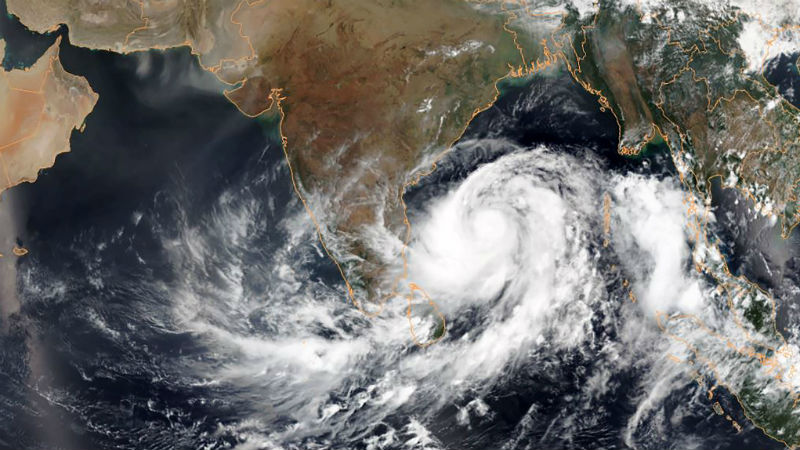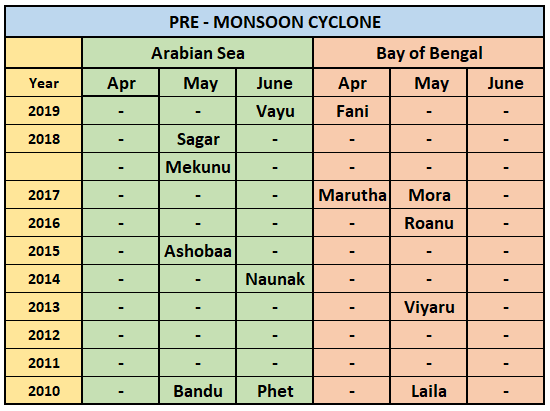
There are two cyclone seasons for the Indian Seas, Bay of Bengal and Arabian Sea, which are pre- Monsoon and post- Monsoon. The former one spans from March to June, while the latter extends from October to December. June is though an onset month for the Southwest Monsoon, but since it takes a few weeks to establish, the month can host some pre- Monsoon storms.
Cyclone Season In India
In the span of the last 20 years i.e from 2000 to 2019, there have been only three years when there were no storms recorded during the pre- Monsoon season which includes 2005, 2011 and 2012. While 10 years saw one storm on each side of the coast, 05 years saw two cyclones in the Bay of Bengal as well as in the Arabian Sea. 2007 and 2010 were the only years to witness three storms in both the seas during the season.
The 2019 North Indian Ocean Cyclone Season was hyperactive. This season featured 12 Depressions, 11 Deep Depressions, 9 Cyclonic Storms, a record 6 Severe Cyclonic Storms, a record 6 Very Severe Cyclonic Storms, a record 3 Extremely Severe Cyclonic Storms and 1 Super Cyclonic Storm, Kyarr.
In the last 10 years, from 2009 to 2019, a total of 13 named cyclones formed in the Indian Seas. These were nearly equally distributed with 7 of these emerging in the Arabian Sea and 6 in the Bay of Bengal.

Out of these storms, Fani was the strongest to hit the Indian Coast (Odisha). Laila headed for Andhra Pradesh but weakened before making landfall. Vayu and Phet threatened the Gujarat coast but dissipated well before reaching the coastline. The rest of the storms in the Bay of Bengal had either weakened or struck Bangladesh or Myanmar. Similarly, storms in the Arabian Sea either weakened or headed for Yemen/ Oman.
Cyclonic storms form depending on the heat potential of the ocean and the scale of cyclogenesis. The heat potential directly gets driven by the prevailing Sea Surface Temperature( SST), which preferably should be above 27 degrees. Positive IOD( Indian Ocean Dipole) does push warm waters in the Indian seas to support the generation of disturbance to support storm formation later. However, IOD is strictly in the neutral phase and may have a limited role. The heat potential is growing alright but not adequate enough for storm formation. Such mild conditions may continue for the rest of April and we look forward to the maiden storm of the season 2020 in May.


